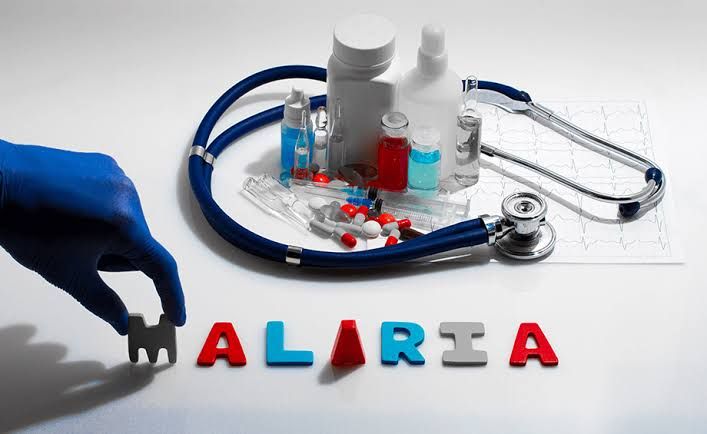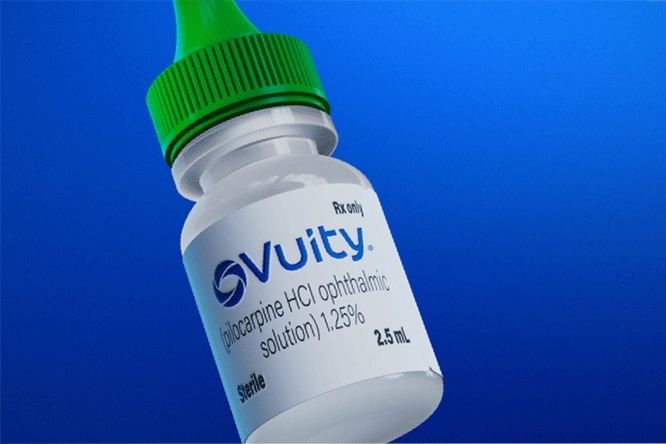
Major Therapeutic Options in the Treatment of Malaria
Malaria is a life-threatening disease caused by parasites transmitted through the bites of infected female Anopheles mosquitoes. The primary causative agents are Plasmodium species, with Plasmodium falciparum being the most severe form. The treatment of malaria involves various therapeutic options, each with specific mechanisms of action, indications, and potential adverse effects.
1. Chloroquine
- Mechanism of Action: Chloroquine works by interfering with the parasite’s ability to metabolize hemoglobin. It accumulates in the food vacuole of the parasite and inhibits heme polymerization, leading to toxic levels of free heme that ultimately kill the parasite.
- Indications: Chloroquine is primarily indicated for the treatment of uncomplicated malaria caused by Plasmodium vivax and Plasmodium ovale. It is also used for prophylaxis in areas where resistance is not prevalent.
- Adverse Effects: Common side effects include gastrointestinal disturbances (nausea, vomiting), headache, dizziness, and pruritus. Serious adverse effects can include retinopathy (with long-term use), cardiotoxicity (especially in overdose), and hypersensitivity reactions.
2. Artemisinin-based Combination Therapies (ACTs)
- Mechanism of Action: ACTs combine artemisinin derivatives (such as artemether or artesunate) with longer-acting antimalarial drugs (like lumefantrine or mefloquine). Artemisinin acts rapidly to reduce parasitemia by generating reactive oxygen species that damage parasite proteins and membranes.
- Indications: ACTs are recommended as first-line treatment for uncomplicated P. falciparum malaria globally due to their efficacy and rapid action.
- Adverse Effects: Generally well-tolerated; however, side effects may include nausea, vomiting, diarrhea, dizziness, and allergic reactions. Rarely, they can cause neuropsychiatric symptoms or cardiac issues when combined with certain medications.
3. Quinine
- Mechanism of Action: Quinine acts by inhibiting the parasite’s ability to digest hemoglobin similarly to chloroquine but through different pathways. It also has a direct effect on muscle contraction and can affect cardiac conduction.
- Indications: Quinine is primarily used for treating severe malaria or when ACTs are not available or contraindicated.
- Adverse Effects: Common side effects include cinchonism (tinnitus, headache, nausea), hypoglycemia, and cardiovascular effects such as QT prolongation. Severe allergic reactions can occur but are rare.
4. Mefloquine
- Mechanism of Action: Mefloquine disrupts the detoxification process within the malaria parasite by inhibiting heme polymerization similar to chloroquine but has a longer half-life allowing for once-weekly dosing.
- Indications: It is indicated for both treatment and prophylaxis against P. falciparum malaria in areas where resistance to other drugs exists.
- Adverse Effects: Side effects may include neuropsychiatric symptoms (anxiety, depression), gastrointestinal disturbances, dizziness, and sleep disturbances. There is also a risk of seizures in predisposed individuals.
5. Atovaquone-Proguanil
- Mechanism of Action: Atovaquone inhibits mitochondrial electron transport in parasites while proguanil inhibits dihydrofolate reductase involved in folate synthesis—together they provide synergistic activity against malaria parasites.
- Indications: This combination is effective against uncomplicated P. falciparum malaria and is often used for prophylaxis as well due to its favorable safety profile.
- Adverse Effects: Generally well tolerated; however, some patients may experience abdominal pain, nausea, diarrhea, headache, or rash. Severe liver toxicity has been reported rarely.
In summary, the choice of antimalarial therapy depends on several factors including the species of Plasmodium involved, severity of infection, local drug resistance patterns, patient health status including pregnancy considerations, and potential drug interactions with other medications being taken by the patient.
Understanding Combination Therapy in the Treatment of Malaria
1. Definition of Combination Therapy
Combination therapy refers to the use of two or more therapeutic agents simultaneously to treat a disease. In the context of malaria, this approach is particularly important due to the increasing incidence of drug resistance among malaria parasites, especially Plasmodium falciparum. The primary goal of combination therapy is to enhance treatment efficacy, reduce the likelihood of resistance development, and improve overall patient outcomes.
2. Rationale Behind Combination Therapy
The rationale for employing combination therapy in malaria treatment stems from several key factors:
- Drug Resistance: The emergence of resistance to single-agent therapies has significantly compromised their effectiveness. For instance, chloroquine, once a cornerstone treatment for malaria, has seen widespread resistance.
- Synergistic Effects: Combining drugs with different mechanisms of action can lead to synergistic effects that enhance the overall therapeutic outcome. This means that the combined effect of the drugs is greater than the sum of their individual effects.
- Reduced Dosage and Toxicity: By using lower doses of each drug in combination, it may be possible to minimize side effects and toxicity while maintaining efficacy.
3. Types of Combination Therapies
There are primarily two strategies employed in combination therapy for malaria:
- Artemisinin-Based Combination Therapies (ACTs): These involve pairing artemisinin derivatives (such as dihydroartemisinin or artesunate) with another antimalarial drug from a different class (e.g., lumefantrine, mefloquine). ACTs are recommended by the World Health Organization (WHO) as first-line treatments for uncomplicated P. falciparum malaria due to their rapid action and high efficacy.
- Non-Artemisinin-Based Combinations: In areas where ACTs may not be available or suitable, other combinations such as sulfadoxine/pyrimethamine or amodiaquine with other antimalarials can be used.
4. Benefits of Combination Therapy
The benefits associated with combination therapy include:
- High Efficacy: Combination therapies have been shown to achieve higher cure rates compared to monotherapy.
- Rapid Action: Many combinations provide quick relief from symptoms by rapidly reducing parasite load.
- Delay in Resistance Development: By targeting multiple pathways within the parasite’s lifecycle, combination therapies help delay or prevent the emergence of drug-resistant strains.
5. Challenges and Considerations
While combination therapy offers numerous advantages, there are challenges that must be addressed:
- Access and Cost: Ensuring that effective combinations are accessible and affordable in endemic regions is crucial for successful implementation.
- Adherence: Patients must complete their full course of treatment; otherwise, incomplete treatment can contribute to resistance development.
- Drug Interactions: Careful consideration must be given to potential interactions between combined drugs which could affect safety and efficacy.
In summary, combination therapy represents a critical strategy in combating malaria effectively amidst rising drug resistance. By leveraging multiple drugs with distinct mechanisms, healthcare providers can enhance treatment outcomes while mitigating risks associated with monotherapy.
Major Therapeutic Options for the Treatment of Major Worms
The treatment of helminth infections, commonly referred to as worm infections, involves a variety of anthelmintic drugs that target different types of worms, including nematodes (roundworms), cestodes (tapeworms), and trematodes (flukes). The choice of drug often depends on the specific type of worm involved in the infection.
1. Nematodes (Roundworms)
- Albendazole: This broad-spectrum anthelmintic is effective against various nematodes. Its mechanism involves inhibiting microtubule synthesis by binding to β-tubulin, which disrupts the cytoskeleton and impairs glucose uptake in the parasite.
- Mebendazole: Similar to albendazole, mebendazole also inhibits microtubule formation. It is primarily used for treating infections caused by Enterobius vermicularis (pinworm) and Ascaris lumbricoides (giant roundworm).
- Ivermectin: This drug is particularly effective against Strongyloides stercoralis and Onchocerca volvulus. Ivermectin works by enhancing the release of gamma-aminobutyric acid (GABA), leading to paralysis and death of the parasites.
- Pyrantel pamoate: This drug acts as a depolarizing neuromuscular blocking agent, causing paralysis in susceptible nematodes. It is commonly used for treating pinworm and hookworm infections.
2. Cestodes (Tapeworms)
- Praziquantel: This is the primary treatment for cestode infections such as those caused by Taenia saginata (beef tapeworm) and Echinococcus granulosus. Praziquantel increases calcium permeability in the parasite’s cell membrane, leading to paralysis and detachment from the intestinal wall.
- Niclosamide: Although less commonly used today due to its side effects, niclosamide inhibits ATP production in tapeworms, effectively starving them.
3. Trematodes (Flukes)
- Praziquantel: As mentioned above, praziquantel is also effective against trematode infections like schistosomiasis. Its mechanism remains consistent across different types of helminths.
- Triclabendazole: This drug specifically targets Fasciola hepatica (liver fluke) and works by inhibiting tubulin polymerization, disrupting cellular processes within the fluke.
Major Mechanisms of Action of Anthelmintic Drugs
Anthelmintic drugs operate through several mechanisms that can be broadly categorized into three main actions:
- Disruption of Energy Metabolism: Many anthelmintics inhibit metabolic pathways critical for energy production in worms. For instance, benzimidazoles like albendazole and mebendazole interfere with glucose uptake by disrupting microtubule formation.
- Neuromuscular Paralysis: Drugs such as ivermectin and pyrantel pamoate induce paralysis in helminths through various mechanisms affecting neuromuscular function. Ivermectin enhances GABA transmission while pyrantel causes depolarization block.
- Increased Membrane Permeability: Praziquantel exemplifies this mechanism by altering calcium ion channels in worm membranes, leading to increased permeability that results in muscle contraction followed by paralysis.
Understanding these therapeutic options and their mechanisms helps guide appropriate treatment strategies for helminth infections based on specific patient needs and local epidemiology.







